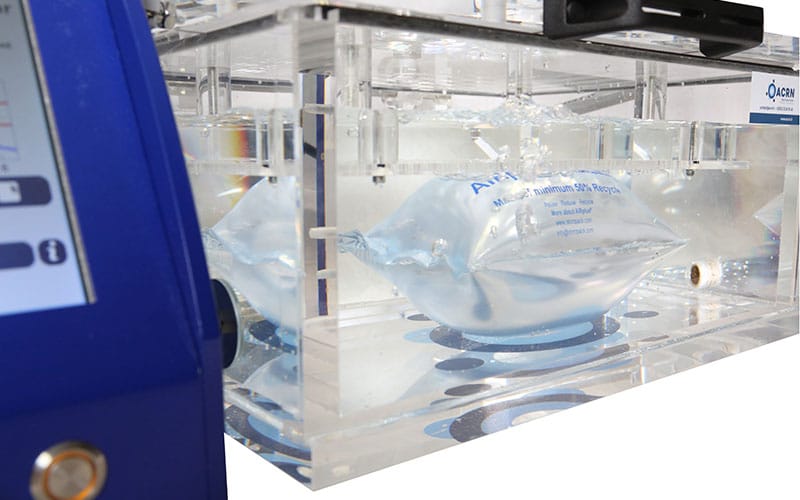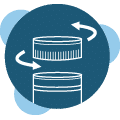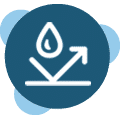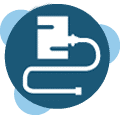Effective package leak testing is essential to ensure the integrity, safety, and compliance of sealed packaging across industries such as pharmaceuticals, cosmetics, and food. Using vacuum chambers is one of the most reliable and flexible methods to detect leaks, whether through visual inspection, bubble emission, or methylene blue dye penetration. At ACRN, we provide dedicated vacuum leak testing solutions tailored to your packaging format, production needs, and regulatory environment.
Why Leak Testing Matters for Packaging Integrity
Even a microscopic leak can compromise a product’s sterility, shelf life, or consumer safety. Package integrity failures often lead to costly recalls, non-compliance with industry standards, and damage to brand reputation.
Vacuum-based package leak testing helps detect these failures early—before the product leaves your facility. It is fast, repeatable, and adaptable to most packaging formats, from blisters and syringes to doypacks and rigid containers.
Vacuum Leak Testing Methods
Dry Leak Testing (Vacuum Decay)
This method places the package in a vacuum chamber. Any deformation or loss of pressure indicates a potential leak.
Ideal for:
- Rigid containers (jars, bottles)
- Pouches and sachets
- Cosmetic and personal care packaging
✅ Non-destructive and visual.
Immersion Leak Testing (Bubble Detection)
Packages are submerged in water inside the vacuum chamber. When vacuum is applied, escaping air forms visible bubbles — a clear sign of leakage.
Used for:
- Flexible packaging like sachets and doypacks
- Vacuum-sealed food packaging
Methylene Blue Dye Test
Used in pharmaceutical packaging, this method submerges blister packs in a methylene blue solution under vacuum. Dye ingress reveals seal failures with high sensitivity.
Commonly used for:
- Blister packs
- Medical containers
- High-value sterile products
🧪 Our chambers are designed for easy dye handling and cleaning.
Choosing the Right Package Leak Tester
CTS – Manual Chambers
The CTS Series is ACRN’s most accessible leak testing solution. It is fully manual, requiring no electricity, which makes it ideal for laboratories, R&D environments, and small-scale production where testing is done occasionally or visually.
CTE – Semi-Automated Chambers
The CTE Series is a semi-automated vacuum leak tester designed to offer a balance between manual control and repeatability. It is well-suited for medium-volume production environments where reliable and consistent testing is required.
Agileak – CFR 21 Compliant System
The Agileak is ACRN’s most advanced vacuum leak tester, designed specifically for industries requiring full traceability, data integrity, and regulatory compliance. It is ideal for pharmaceutical, biotech, and high-end cosmetic applications.
Equipped with a touchscreen interface, the Agileak enables operators to select from pre-programmed test cycles and adjust vacuum settings with precision. The system allows for multiple user profiles with password protection and different access levels (operator, supervisor, admin), which is essential to comply with 21 CFR Part 11.
Industries Served
- Pharmaceuticals – Vials, blisters, sterile containers
- Cosmetics – Flexible tubes, jars, pouches
- Food Packaging – Vacuum-sealed bags, MAP containers
Why Choose ACRN Vacuum Leak Testers?
When it comes to package leak testing, choosing the right equipment is crucial to ensure product integrity, regulatory compliance, and customer satisfaction. At ACRN, we specialize in vacuum-based testing solutions that are designed to meet the demanding requirements of industries such as pharmaceuticals, cosmetics, and food processing.
With over 30 years of experience, we provide manufacturers with robust, customizable vacuum chambers that deliver reliable, repeatable results—whether for routine production checks or validated, audit-ready testing processes.
✔ 100% Vacuum-Based Technology
We focus exclusively on vacuum chamber technology. This ensures that every chamber we produce—manual or automated—is optimized for dry testing, immersion testing, or methylene blue dye penetration, with excellent vacuum tightness and mechanical reliability.
✔ Models for All Levels of Automation
Whether you need a basic manual tester (CTS), a semi-automated solution (CTE), or a fully traceable, CFR 21-Part 11 compliant system (Agileak), our range is designed to adapt to your workflows and regulatory constraints.
Each series serves a purpose:
- CTS → Fast, visual tests in labs or small production
- CTE → Reliable, repeatable tests in semi-industrial settings
- Agileak → Full compliance and data traceability for regulated environments
✔ Customizable Sizes & Configurations
Our chambers are built in France and can be adapted to the size of your packaging, the type of opening you prefer (front door or top lid), and your testing environment (benchtop, cleanroom, or industrial).
We manufacture chambers for formats ranging from small blisters to bulk doypacks up to 500 × 450 × 500 mm.
✔ Designed for Industrial Environments
Our enclosures, seals, vacuum fittings, and valves are built for reliability, safety, and ease of use, even in 24/7 production lines. Every model is made with quality materials (aluminum, stainless steel, reinforced plastics), with attention to visibility and ergonomics.
✔ Expert Support and Technical Guidance
We don’t just sell equipment—we support your process. From defining the right testing method to installing the chamber, training your teams, or even adapting the equipment for specific sample shapes, our team is involved.
And when needed, we offer remote or on-site support, custom spare parts, and annual calibration services.
✔ Made in France. Built to Last.
All our vacuum chambers are designed, assembled, and tested in France. We control our supply chain, which ensures short lead times, technical flexibility, and long-term serviceability.
ACRN is not just a supplier—we’re your partner for package integrity.
🔗 Explore our range of vacuum leak testers
Need Help Selecting the Right Tester?
Our experts can help you choose the best vacuum chamber and test method for your packaging type and regulatory needs.






